The Desert War: Gaming WW2 in North Africa Part One – Overview and Origins
August 17, 2015 by crew
In the study of military history, certain battlefields can acquire a mythic, almost romantic allure. Even amidst the horrors of World War II, there’s one campaign that somehow seems “clean,” isolated, and almost chivalrous. This, of course, is the Desert War, fought in Africa and the Middle East from June 1940 to May 1943.
Getting Started In The Desert
In this article series, we’ll be taking a “wargaming look” at the Desert War and what sets it apart from the usual World War II games many of us enjoy. What made the Desert War different? How can games be adapted to play in this theatre? What kind of terrain do we find, what tactics were used, and what did the armies look like?
To help facilitate the discussion, we’re running a series of 15mm miniature games using an adaptation of PSC’s “Battlegroup” (still the best WW2 miniatures game I’ve played). Using a mix of information presented in the game’s “Blitzkrieg,” “Barbarossa,” “Kursk,” and even “Fall of the Reich” sourcebooks (along with a plenty of “Oriskany-style” historical research), we were able to cobble together a Desert War miniatures dataset that ran very well.
So why play a wargame set in this campaign? For starters, there’s actually a core of truth to the romance connected to this theatre. There were no SS units deployed here, and there were very few civilians to get caught in the crossfire. Diaries and records show that there was a certain degree of “fair play” shown between the armies, perhaps because both sides faced a third enemy...the desert itself.
The Desert War also provides new challenges for players perhaps growing weary of French bocage or Russian steppe. The terrain here is obviously very different and offers a whole new outlook and backdrop for tactical wargaming. The old tricks won’t work here, while new tactics become available. These include “hull down shielding” for tanks and some of the first “special forces” operations. The SAS was born in these deserts, after all.
The Desert War was also incredibly diverse. About 75% of the Axis troops are Italians, not Germans. The “British” forces are often nothing of the sort, usually Indians (including troops from modern-day Pakistan, Bangladesh, and Nepal), South Africans, Free Poles, Greeks, New Zealanders, and Australians. There were even detachments of Zionist Palestinians and an anti-aircraft unit from Hong Kong.
Of course the Americans joined the conflict in November, 1942 with the Operation “Torch” landings in Morocco and Algeria. Free French and Vichy French figured prominently, sometimes even fighting each other (e.g., Syria in 1942). African colonial units were drawn from armies as far-flung as Madagascar. For anyone who’s interested in expanding the diversity of their armies, this is a good place to start.
Furthermore, at least from 1940 to the beginning of 1942, most of the battles in the Desert War were actually quite small, at least when compared to other fronts. This smaller context can give your games bigger comparative impact to the overall picture. Many are the historical moments when you could accurately field the ENTIRE armoured strength of Rommel’s Afrika Korps on a single table of Battlegroup or Flames of War.
And lastly, players who brave the desert are challenged to win with a lot less than on other fronts. These were armies often held together with baling wire and duct tape. Forget Panthers or Fireflies. A Matilda II with a 2-pounder or a Panzer III with a 50mm gun is mighty, and when the basic Sherman first appeared in late August of 1942, it was practically (and briefly) god-like.
The War Begins
The Desert War started almost by accident. Basically, when Germany was overrunning Western Europe in May 1940, Mussolini thought the time was right to strike the weakened Allies for some quick, easy territorial gains. While the Italian invasion of southern France met with disaster (six French divisions smashed an Italian Army five times its size), the Italians were also striking at British possessions overseas.
The Italians actually enjoyed some success here. First, their army in Ethiopia invaded the British colony in Somalia in August 1940 (when the Battle of Britain was just reaching its greatest pitch). Sheer weight of numbers delivered an Italian victory here, and the British were forced to evacuate “Dunkirk style” to Aden.
First Strike
This invasion of British Somalia was the backdrop for our first Battlegroup game. Hopelessly outnumbered, the British fell back to the Assai Hills, where the high ground would hopefully give British an advantage. Also, this position blocked the road to Berbera, the main port from which the British were planning their retreat.
The “British” force was made up primarily of the King’s African Rifles (“Nyasaland” Battalions from modern day Malawi), backed up by a Pakistani battalion of the 15th Punjab Rifles, supported by East African Light Artillery (18/25 pounders). The attacking Italians had the 7th Colonial Brigade (very solid East African “askari” troops), a handful of wretched M11/39 tanks and L3/CV35 “tankettes”, and a battery of “75/18 modello 34” light howitzers.
In this game, the Italians had a significant edge in both numbers and antitank capability. Clearly the British would have to make the most of their high ground, off-board artillery, and long-range rifle fire in order to pull off a win. The Italians, meanwhile, had to push up the British-held high ground and establish a foothold in Tug Argan.
To make the dangerous approach, the Italians threw their main armour/cavalry push behind some dunes that would provide at least some cover. British rifle fire was incredibly accurate, though, the Punjab and Nyasaland sharpshooters taking a grim toll. This was especially true when the Italians’ East African cavalry made the final rush at the Nyasaland riflemen holding the Tug Argan wall, the scene felt ripped right out of a desert adventure movie.
An Axis Push
Next we come to Egypt and Libya, the “main theatre” people remember from the Desert War. Again, the battles start off very small, with “armoured vehicles” that are almost laughable. These were engagements determined by infantry, towed artillery, and above all, supply. In many photos, the terrain looks flat and featureless, but don’t be fooled. Even the most subtle dune can provide complete concealment or at least a hull-down advantage.
Alam el Dab (discussed in the caption above) was one of the few “mobile” battles of the Italian invasion, since most of their Tenth Army was “leg” infantry. Yet even most of their “tanks” were armed only with machine guns. For actual cannon, the Italians had only a handful of M11/39 tanks, armed with a 37mm gun (in the hull, no less).
British antitank capability at Alam el Dab was even shakier, with just “Boys Antitank Rifles” mounted in some universal carriers and 1920s-era Rolls Royce armoured cars. This was a .55 calibre infantry rifle (think of the large sniper rifles carried today) that could shoot through very thin armour plate. Fortunately for the 11th Hussars, “very thin” was all the Italians had.
Once again, the Italians put up a very good showing in our game. The mobile “Maletti Group” (backed up by Libyan colonial infantry) cut off most of the Coldstream Guards and subjected them to withering MG fire. The vengeful 11th Hussars, however, mauled the Italians (especially their Libyan infantry) so badly that they managed to pull out a British win, by ONE POINT.
Of course our “Desert War” campaign has barely started, all we’ve done here is set up the chessboard and moved the first Italian pawns. Upcoming articles will cover the “British Blitzkrieg” that was Operation Compass, crushing the Italians so badly that the Germans finally had to send help. That help would come in the form of Erwin Rommel, commanding a handful of threadbare, incomplete panzer units that history would soon immortalize simply as the “Afrika Korps.”
If you would like to write an article for Beasts of War then please contact me at [email protected] for more information!
"To help facilitate the discussion, we’re running a series of 15mm miniature games using an adaptation of PSC’s “Battlegroup” (still the best WW2 miniatures game I’ve played)..."
Supported by (Turn Off)
Supported by (Turn Off)
"In many photos, the terrain looks flat and featureless, but don’t be fooled. Even the most subtle dune can provide complete concealment or at least a hull-down advantage..."
Supported by (Turn Off)
































![How To Paint Moonstone’s Nanny | Goblin King Games [7 Days Early Access]](https://images.beastsofwar.com/2024/12/3CU-Gobin-King-Games-Moonstone-Shades-Nanny-coverimage-225-127.jpg)








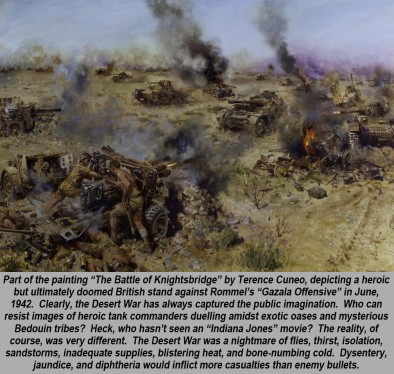
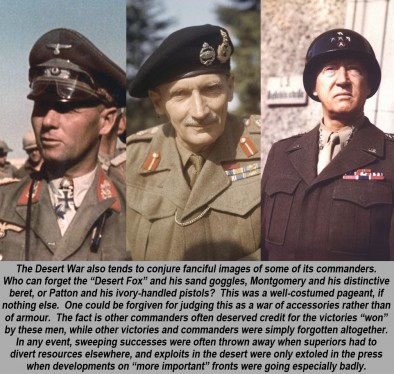


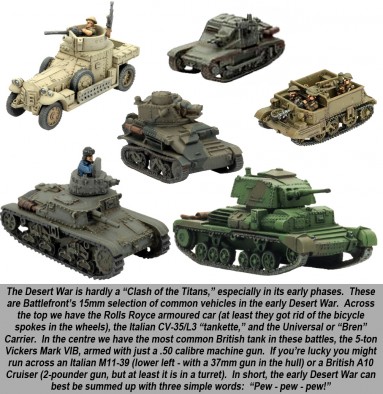
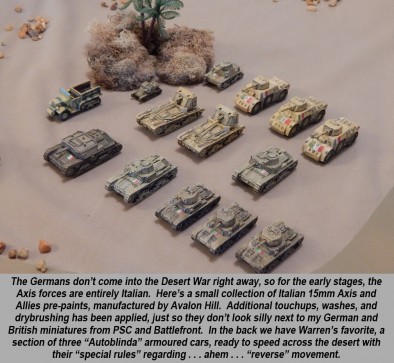
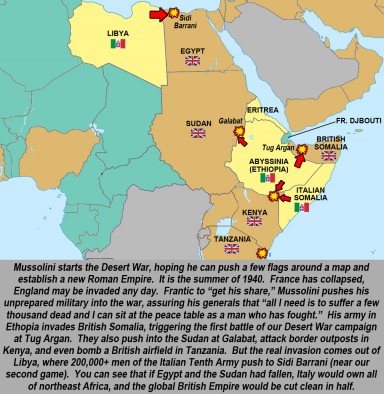
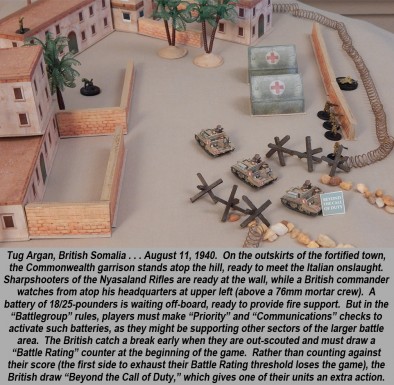

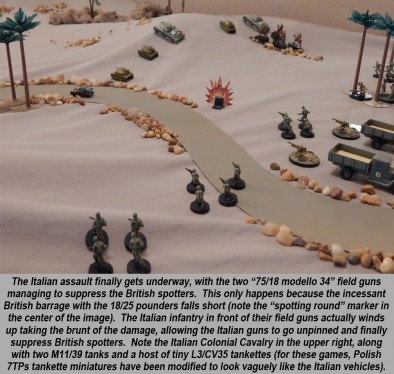
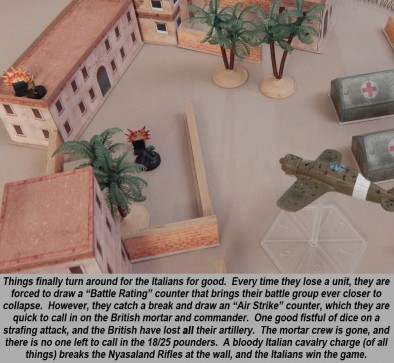
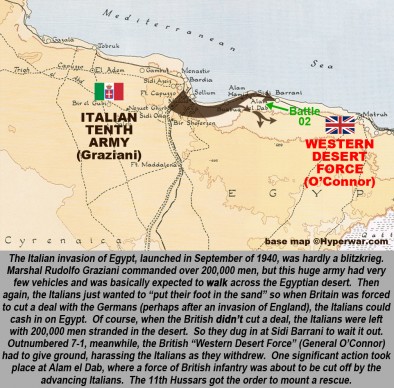
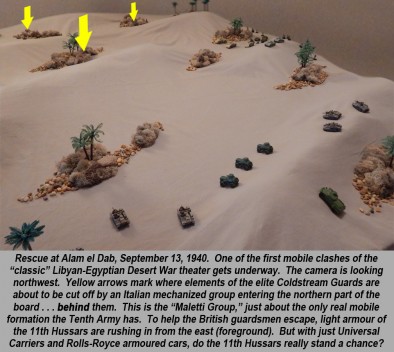
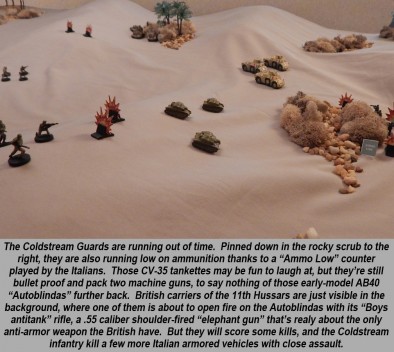
































Oriskany you Devil! How did you know that I’d just bought a DAK Panzergren Company with some LRDG and SAS jeeps?! 😀
Excellent read! Looking forward to Rommel entering the fray!
Rommel enters with Operation “Sonnenblum” (Sunflower), February-April 1941 . . . Part II of our series. Next week, stay tuned!
“Sonnenblume”… the “E” at the End is important 😉
But great work so far. Looking forward for more 🙂
That’s what I get for posting these at work. Always in a rush. 🙂
Thanks!
I am jealous of your LRDG jeeps. 🙂 I take it these are the Chevrolet 30cwt? (What the hell does that mean, anyway, “cwt?” Is that like “hundred-weight,” as in these are ton-and-a-half jeeps / trucks?)
Part IV of this series will feature some LRDG action, late summer of ’42.
…long or short hundredweight?
They are, combined with the regular Willys Jeeps. I got the Sting of the Scorpion and Who Dares Wins boxed sets from a local store where they were gathering dust (and had a nice -50% tag).
I bought them to store for a later time, but this article series will probably undermine that plan! 😀
Not sure if cwt is the right measurement, I can lift a box with eight of those with one hand… *cough* 😉
@neves1789 – “I bought them to store for a later time, but this article series will probably undermine that plan!” I’ve been waiting for an excuse to play LRDG for years. Don’t make my mistake and let it wait! Life’s too short! I even tried it with Panzer / Desert Leader, even though it is totally the wrong scale. I’ve always wanted to run some LRDG fights in Valor and Victory or maybe Combat Commander now that my friend has the Mediterranean expansion for it. Of course, now I’ll run in it “Frankenstein Battlegroup.” 😀 Which will be doubly difficult… Read more »
A nice read indeed @oriskany
So… you are trying to show here that Italian army could actually fight? 😉
The Italian Army is a difficult question, @yavasa. The short answer is YES, they definitely could fight and under certain circumstances, did very well. I’ve actually been wrestling a little with how to address this in the article series within the constraints of how much space I have and which battles I could cover. So thanks for asking, it gives me a chance to get this out. 🙂 It can’t be denied that the Italian Army was fighting under some crushing disadvantages in World War II that ensured that the Italian soldier would almost always be fighting “uphill.” 1) Italy… Read more »
Last thing you mentioned was very well shown in the fact that Rommel used the Itallian Bersaglierie in nearly every crucial defensive position. They stood their man.
In the 20th century the equipment was getting more and more important. Poor equipment -> bad results.
@oriskany I hope you know that I was just teasing with the question 😉 I am really glad that you have organized and put here the main reasons for why Italy did so poorly during the war despite the fact that they actually had some brave soldiers on their side. It was not the XIXth century when one could say that Italy had an army for the Austrians to win with someone. As you have pointed out in the article, difficult conditions, lack of supply and the fact that the Italian army was supposed to make the offensive on foot… Read more »
No worries at all, @yavasa . I totally meant what I said about getting the chance to expound on some of these topics. Too often I have to leave things out of the article and as I hit the delete button, I think to myself: “Man, I hope someone asks about that or brings up this point in the comments” 🙂 Von Mellenthin gives the Italian SOLDIER high marks in “Panzer Battles” (I think he was Rommel’s operations staff officer for part of the campaign) – even if he (and many others) gives the Italian ARMY poor marks. The organization,… Read more »
Agreed @oriskany
I am not going to get deeper into the issue of German command’s bad opinion about Italians. Waiting for part two. 🙂
Yes, a great discussion so far.
A good start guys
Excellent read, this will be an awesome series. So tempted to get some minies for the african theatre.
Thanks, @noyjatat and @guillotine . I’m happy to say the map tables get better in the rest of the series. 😀
Great read as always @oriskany I look forward to the next phase mate.
It is funny you posting this, I have was only talking to the wife on Saturday about starting a raiding force for North Africa.
I started North Africa in 10/12mm a few months ago. I’d really like to use Battlegroup but, as you stated, I’d need 2-3 books to get the stats I need until the actual NA book is released next year. So I’m still searching for a rules set. Your figs look good!
Thanks, @chaingun – glad you like it and the second article is already written. Here comes Rommel! Still a while before Montgomery comes in, and the Americans come in almost at the very end. Indeed, @schogun , putting together the stats was “half the fun,” as they say. I used Barbarossa for the early German equipment (obviously), Kursk for some of the British equipment (Lend Lease Matildas, Valentines, etc) – and then the mid-war German stuff like the later PzKpfw III “Specials,” etc. Fall of the Reich was useful for Shermans, Churchills, Wolverines that fought at El Guettar, so on… Read more »
Great start to a very interesting series.
“3) Portions of the Italian officer corps at the time were terribly corrupt. Many key commanders were in place because they knew or were related to someone.”
So this is where my company developed its hiring strategy.
“So this is where my company developed its hiring strategy.”
A little of that everywhere, I suppose. Blue collar, white collar, or “green” collar . . . wartime or peace time, and no matter the century . . . people are people. 😐
I always feel a bit sorry for Italians. If WW2 had started in 35 or 36 they would have had the greatest tank force in Europe apart from the French. What a difference a few years can make
The same could also be said for the Soviets. If the war had started before their officer corps was purged and Germany had rebuilt the “panzerwaffe” (or at least . . . progressed as far as they did with rebuilding the panzerwaffe) 🙂
I like how the Italians mark their tanks with their national colors. Why don’t American tanks have giant flags on them?
@rfernandz2001 – Actually that might be a SLIGHT goof in my miniatures. 🙂 Some of them are Axis & Allies 15mm prepaints, and I just did the others so they all matched on the table. Italian tank markings within a platoon were actually more “standardized,” as referenced below:
http://www.flamesofwar.com/Portals/0/all_images/Modelling/Italian%20tank%20markings%201.jpg
Neat! Thanks. You must be passionate about historical wargaming to go in to the extra effort to respond to so many comments with more detailed information.
Question: When you game do you require historical accuracy? Could you bring yourself to play Japanese vs Germans, for example?
Do I “require” historical accuracy? Hmm . . . 1) In game mechanics and scenario design, yes . . . as much as possible. For instance, I don’t use “army lists,” terrain generator tables, “generic” victory conditions, or even most “scenarios” designed by game manufacturers. I use what was there (or in the case of miniature gaming, a small SLICE of what was there), with historical terrain, historical victory conditions, special rules, etc. 2) In miniatures, no. Many are the times that a certain size dice, proxy vehicle, or even a cigarette lighter has taken the place of what was… Read more »
You should start this as a thread. I’d like to hear what people will try out.
The alternative history bit, WW2 in America, “Red Dawn” meets “Saving Private Ryan?” That would be a good idea for a thread. I don’t have any miniatures for it, though, strictly a hex-and-counter thing. The thing with alternative history is that most historical gamers find it fun as a one-off thing. Non-historical gamers, too, before they go back to Pulp or Sci-Fi. Long story short, it’s “between” genres and with MOST groups it’s not worth a big investment in work of $$$. WW 2.5 worked because we were able to use pre-existing miniatures. Still, that WOULD be a fun thread.… Read more »
I love this period for games of FOW and have a large Italian force for this in 15mm and have just started to put together a Bolt Action Italian force in 28mm for this theatre.
Really looking forward to reading the rest of this series!
I’m thrilled to see this series. I am building up Perry DAK and Desert Rats for bolt action right now. Excellent timing! I’m focusing on the very end of the Africa campaigns since that’s where most of the plastic kits seem to fit best. I’m especially interested in learning more about the allies equipment and vehicles as I’ve been struggling a bit with figuring out what fits the time period.
Thanks, @stert and @koraski . 🙂 Glad you like it so far. I’m happy to say the tables DO get better, and the equipment range and variety of engagements expands quite a bit. Seems like there is a lot of Bolt Action interest for this theater. You guys must be having an even harder time building tables than I am at 15mm, given the scales of BA. Are you sticking mostly with infantry? The last part of the Desert War, Koraski, takes place most in Tunisia. Allied equipment includes, well . . . quite a bit. Are you talking tanks?… Read more »
So far I have 6 squads of DAK infantry plus some special teams, 4 warlord plastic half tracks, 3 panzer III’s (stubby barrel version), a panzer IV and STuG III both with “mid war” version guns, and a Tiger I. I also have a couple of Panthers and a Puma to add in for balancing late war opponents if need be. I’ll call those my late war Italalian theatre forces. For allies I have enough Perry desert rats to match my DAK infantry plus one Universal carrier and 4 M3 half tracks (I thought they were appropriate for the 8th… Read more »
@koraski ~ It sounds like you’re doing pretty well building “historically plausible” Bolt Action forces for North Africa. The equipment you mention: Pz III “stubby barrel” version – Sounds like these could be PzKpfw-IIID (shorter 37mm) or G (medium-length L42 50mm), both of which were huge participants in the Desert War. The DAK was usually on the bottom of the supply priority lists (especially once Barbarossa kicked off in Russia), so the didn’t usually get the Pz IV. This forced the DAK to make do with the Pz III as best as they could. The best was the Pz IIIL… Read more »
You reminded me I had a 222 stashed away somewhere. Dug it out and built it. I also just discovered thanks to Warlords Panzer III in Bolt Action article that I built mine with howitzers instead of AT guns! Fortunately I didn’t glue the barrels. Hope the paint doesn’t get messed up when I swap guns.
@koraski – Good call re: switching out the PzKpfw-III howitzer for the AT gun. Now that I’m at home instead of work, and have my books handy, I can verify what I feared about the Mark-III “N” with the 75mm L24 howitzer. Yes, 663 of these were built and 27 more converted, but only between June and August of 1943 . . . in other words WAAAY too late for Desert War. They were deployed primarily (and oddly) mostly with the “schwere panzerabteilung” Tiger battalions, to provide HE support for the Tiger’s antitank 88s. Thus, these were almost entirely deployed… Read more »
I know we’re not there yet, but while I remember, I highly recommend “The Rommel Papers”. Rommel kept a Diary and regularly wrote to his wife. It is a true Gem of a book.
http://www.bookdepository.com/Rommel-Papers-Liddell-Hart/9780306801570
Well written and researched as always – after North Africa, my interest in the war start to wain off a little – Early war and NA seem to be where it is still up in the air and no big cats, Jumbos or other heavies to take into account
Thanks @bazleebub and @rasmus . 😀 I’ve never read the Rommel Papers, but in Stackpole Publishing’s “Life and Death of the Afrika Korps” they mention Rommel writing to his wife almost every day. If I remember correctly, some of these letters are actually quite depressing, especially once Rommel realizes he’s NOT going to win this war and he starts getting health problems. I agree, rasmus, in early war and North Africa, the games often just seem more interesting. The ranges are so short, especially for antitank weapons, that there remains more room for maneuver and fun tactics. In 44 or… Read more »
Given unlimited time and resources – Market Garden would be one to do in Bolt Action – like some of the North African. I will resist for now, have a move coming up so I should really not start anything new.
But once we get settled …. it may be time to do something new and this might be it …
We’ll be waiting for you, @rasmus ! Between battles we’ll be at the “Desert Campaign Kasbah,” first cantina on the left! 😀
Thank you James as always’
very readable, well researched, intelligent paced and more than worth the time taken to read it a couple of times to take it in.
Waiting for next weeks mate.
Found myself engrossed by this great read looking forward to the next articles!!
Thanks, @chrisg and @dafthelmet85 . I’m always glad to hear people like these articles . . . especially since I’m often half-afraid I’m laying this history on too thick. The next article is already submitted (Compass and Sonnenblume) and we’re playing the games for Article III tomorrow (Crusader / Gazala)!
excelent mate! I cant wait to hear more!
Great article, i didn’t realise that the fighting extended so far down in to Africa or that the British forces were had so colonial troops. I look forward to reading the rest of this series.
Great job
Thanks @radegast6 and @hairybrains . 🙂 Yes, fighting in Africa raged all over, BUT . . . those “explosion” battle markers I have in Tanzania and Chad, etc . . . are sometimes single small engagements or even one bombing raid. Iraq is an insurrection (not really a “battle”). The big majority of the fighting took place along the northern coastal strip of western Egypt and eastern Libya. The fighting in Somalia, Ethiopia, and Eritrea, however, was sustained and sometimes very heavy, at least up until the middle of 41 or so. Also in 1942, there was Operation “Ironclad” –… Read more »
If you’d asked @oriskany you could have had a glimpse at the draft for Battlegroup Tobruk… 😉
Due next April if we get it finished in time!
Awesome, @piers . I honestly didn’t know you guys were working on one (you may have told me and I forgot – I’m not as sharp as I used to be). It’ll be interesting to see how close my guesses on some of these things come out in the “official” Tobruk book. 🙂 I’m imagining some special rules for things like Hull Down, En Portee antitank guns? I can imagine a few special counters to through into the dreaded battle rating counter mix. 🙁 Oh look, my Crusaders overheated AGAIN?! What do you mean my M3 Lee/Grant can’t use hull-down,… Read more »
….(sniff, sniff)
Excellent article. Super stuff.
This is the first time I’ve ever heard of a battle/front ever being referred to as “clean,” isolated, and almost chivalrous. However, once I read your explanation, it really made sense. It was almost a “safe” front having all the fighting happening in the middle of nowhere. Have read a lot recently about D-Day and Eastern Front, this article series seems like it will be a refreshing breath of dry, hot, sandy air.
Keep up the good work!!
Thanks, @testsheepnz and @gladesrunner . The descriptions of “isolated and chivalrous” are kind of the myth, rather than the reality . . . however, there IS a core of truth (as with almost any myth). Examples: Several accounts of the Desert War describe recon patrols going out from either the German or Commonwealth side, and as sometimes happens, they get captured. The army that captured the enemy patrol would often try to find a way to let the other side know (without violating military security, of course). “Hey, we have your guys. Lt Smith, Sgt Jones, Corporal Brown, and Privates… Read more »
Great read! I play DAK in Bolt Action, always wanted to try Italians next 🙂